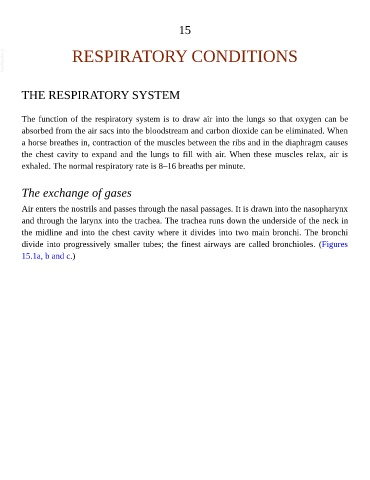Page 633 - The Veterinary Care of the Horse
P. 633
15
VetBooks.ir RESPIRATORY CONDITIONS
THE RESPIRATORY SYSTEM
The function of the respiratory system is to draw air into the lungs so that oxygen can be
absorbed from the air sacs into the bloodstream and carbon dioxide can be eliminated. When
a horse breathes in, contraction of the muscles between the ribs and in the diaphragm causes
the chest cavity to expand and the lungs to fill with air. When these muscles relax, air is
exhaled. The normal respiratory rate is 8–16 breaths per minute.
The exchange of gases
Air enters the nostrils and passes through the nasal passages. It is drawn into the nasopharynx
and through the larynx into the trachea. The trachea runs down the underside of the neck in
the midline and into the chest cavity where it divides into two main bronchi. The bronchi
divide into progressively smaller tubes; the finest airways are called bronchioles. (Figures
15.1a, b and c.)

